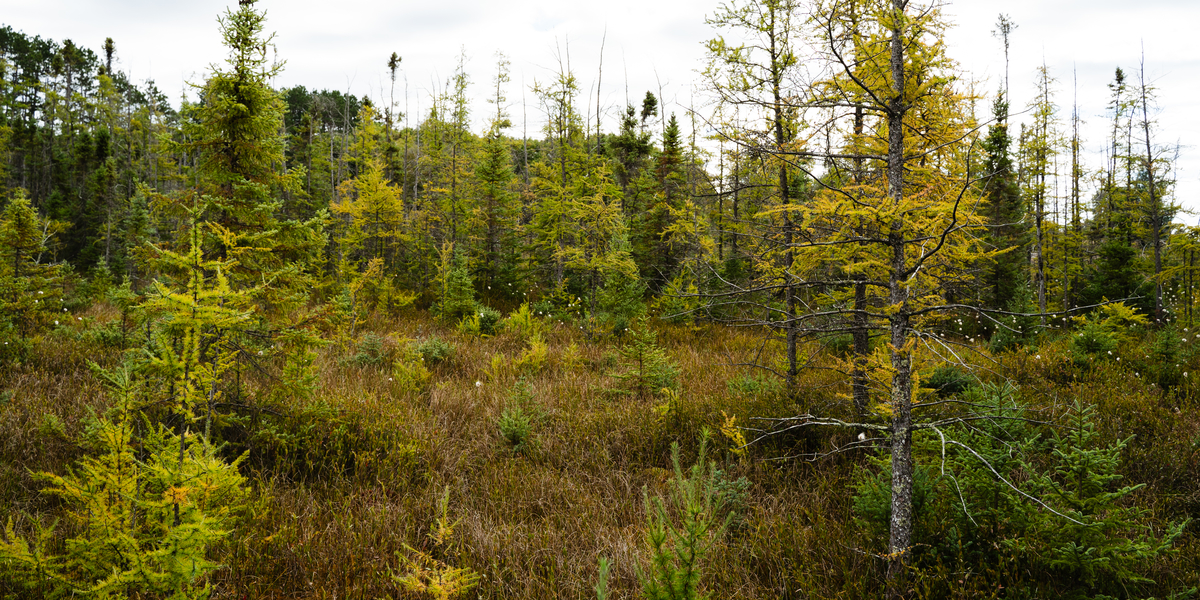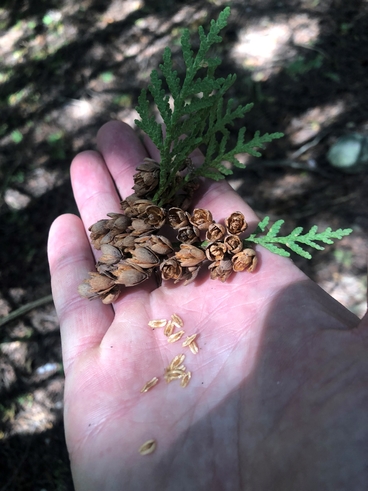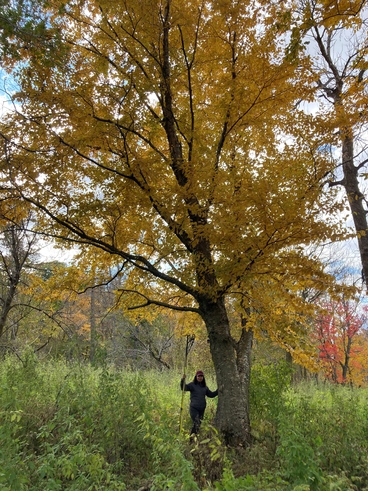
Nothing is immune to the insidious forces of climate change — not even the cool, boreal forests of Minnesota.

As warm zones inch north, scientists like Nick LaBonte — a geneticist for the U.S. Forest Service — are trying to keep forest adaptation ahead of the curve by planting warm-adapted seedlings in the Superior National Forest. He’s not modifying tree genomes to reach his goal. Instead, LaBonte is turning to another valuable resource in search of a genetically diverse seed mix: nature. Sites like Cedar Creek are perfect for collecting seed specimens that could bolster the resilience of Minnesota’s forests.
The species list he’s trying to save is long. But among them, boreal conifer species including tamarack, white cedar, red pine and jack pine all face particular challenges in a changing environment. As winters get shorter and summers get hotter, pests have more opportunities to target vulnerable populations. Other factors like drought might make less resilient trees less productive.
“The less adaptive genotypes may start dropping out of the population or won’t have as much reproductive success naturally,” says LaBonte.

The projected climate of the Superior National Forest is similar to the previously recorded climate of central Minnesota, where trees of vulnerable species have adapted to these warmer regions for years. Many of these species’ southernmost range is in central Minnesota, making central Minnesota a perfect place for Labonte to search for seeds. The more sites he explores, the more of a genetic variation he can bring to a seed collection.
This could ensure a hardy forest population as the seeds are planted up north.
“X” marks the spot
It’s a bit like a treasure hunt.
LaBonte searches historic herbarium records, screens satellite imagery for signs of desired species, and makes sure he has the legal “go-ahead” to search sites for his target trees. Sometimes, he’s not so lucky. But since Cedar Creek is protected by scientists, it wasn’t hard for LaBonte to pursue his research there, and it’s become an ideal place for him to collect samples.
“Cedar Creek is in a sweet spot for providing climate-adapted seed sources to the Superior National Forest,” says LaBonte. “It’s unique in that it has this complement of more northern tree species that are growing there. I'm particularly interested in getting genetic samples of cedar trees.”

Even if he’s found a good tree, though, timing harvest can be a challenge. Some species, like the red pine, can go up to five years without producing pine cones. Another obstacle is the harvest itself. Squelching through thick bogs on 90-degree days to get to tamaracks (whose cones ripen the first week of August, usually) can be daunting. Even more obscure are the methods his team uses to reach perfectly matured cones in trees more than 20-30 feet tall. Those, he often leaves to certified tree climbers. (Yes, that’s a thing.) For shorter trees, the team usually uses a pole pruner.
What’s next for baby pine?
Ultimately, LaBonte’s goal is to collect specimens at the ideal maturation, while they’re still viable but before they blow away in the wind. From there, their fate as seedlings is predetermined. A few go to seed orchards, where the matured trees’ traits are studied and their seeds will be collected to supply a federal Forest Service nursery in Michigan. “That's where we grow almost all the trees that are planted on the National Forest in the Eastern Region,” says LaBonte. Other seedlings are streamlined straight to a chosen planting site on the Superior National Forest, where they’re monitored by staff and will ultimately also furnish seeds for the reforestation program.
Seedlings in the seed orchards can take up to 15-20 years to mature and drop seeds. And if they establish, the same goes for those planted in the Superior National Forest. But Nick LaBonte is in it for the long haul.
“Our main goal is to get plantings that'll produce genetically diverse seed for the future,” says LaBonte. “But it’ll be interesting to see if there’s evidence of subtle differences between the populations. I'm really looking forward to seeing how all these southern-range seed sources perform in national forests.” — Adara Taylor